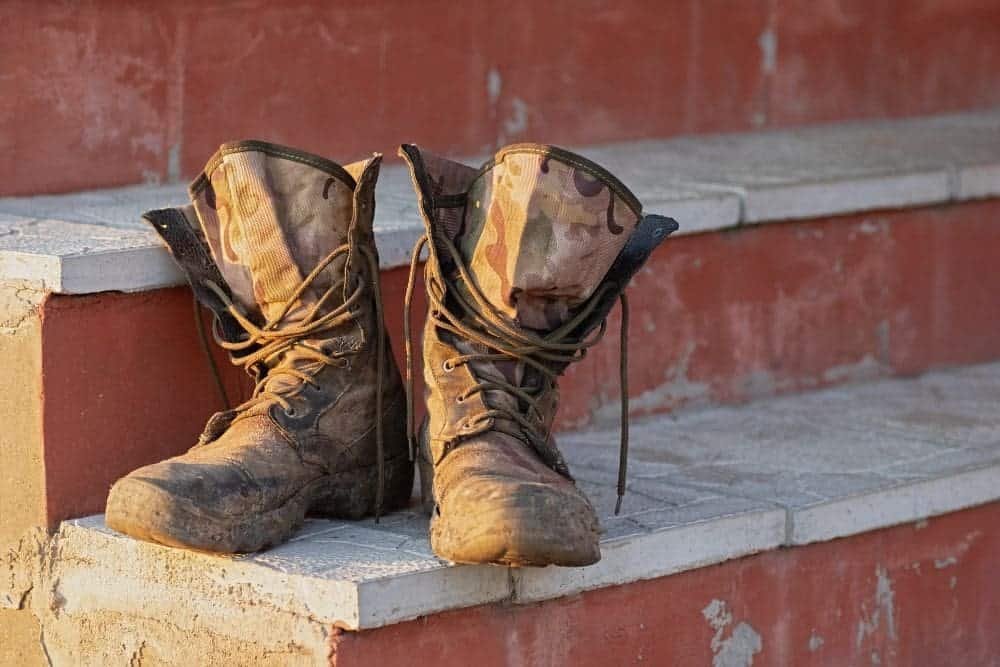Anyone who has ever used tactical boots will feel that this is the most versatile footwear.
You can use it as a pair of work boots with safety features or can either use them as training boots or fashion footwear because of their badass look.
That’s because they’re pretty neat and light.
But to define the “lightweight” of a boot, especially tactical boots, we don’t just look at the number that appears on the scale.
It also depends on the feeling and experience of the wearer.
If a person has feet that are regularly trained with heavy footwear, they will not feel their best in a “too light” boot.
If civilians rarely exercise their body and feet, they will find better comfort in a boot that makes them feel like running shoes.
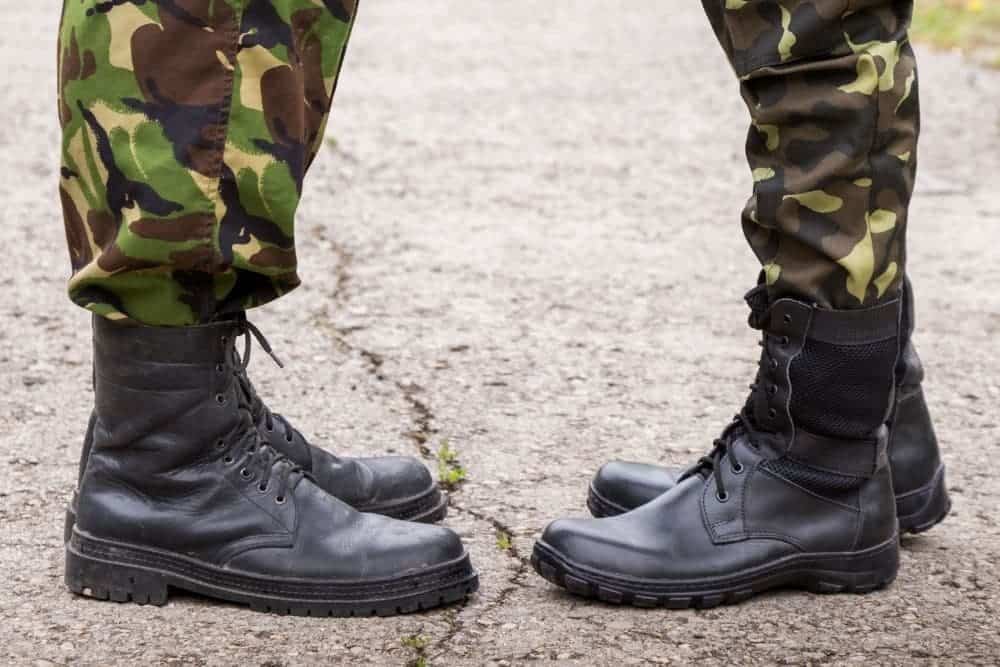
According to some sources, a tactical boot weighs in the range of about 1lb to 2.4lbs depending on the included features.
This means that you will have a wide range of tactical boot choices to find out what works best for your body when it comes to the boot’s weight.
But it can be said that, of all the specialized boots for professional heavy-abuse activities, tactical boots are rated as one of the lightest.
Now let’s come closer to find out what features make tactical boots lightweight.
Quick Navigation
Are tactical boots lightweight?
The answer is Yes, but the boot’s weight can vary depending on what features you go for.
There is something very interesting about choosing tactical boots for your purpose.
That is, you will have a lot of alternatives for a feature to match the weight and uses you want.
For example, the toe cap is an almost mandatory feature of tactical boots to be qualified as work boots.
You can choose between steel toe cap (super heavy), composite toe cap (not too light but acceptable), TPU toe cap (relatively light), or hard plastic toe cap (very light).
It’s not nonsense to say that tactical boots are like a chameleon that you can choose any change you want them to turn into.

What makes tactical boots lightweight?
Here are some main features that can make a big change in the tactical boots’ weight.
Leather Fabric
When taking a close look at thousand lists shown on the Internet, you will find out that most tactical boots use leather as the main material to cover the top of the boots including the collar and shaft.
This can be explained by the fact that tactical boots often have a design quite similar to military boots that are adequate to use in tactical activities such as hunting or professional law enforcement.
If you wear tactical boots in the military, you will be required to follow the general rule of using 100% real leather as the main garment material.
This will make the boots relatively heavier than usual.
If you are acting as a cop, you can wear tactical boots made of synthetic leather with a black polishable toe. Synthetic leather will reduce the weight of the boots a bit.
In case you use tactical boots as a regular work boot at work, you will have more choices of fabrics such as Cordura or other advanced fabrics that are much lighter than leather.

Mesh/nylon upper
Just like the fabric coverage of tactical boots, the upper part also occupies a large area of the entire top of the boots.
If the upper is made entirely of 100% leather, this can increase the weight of the shoe by half.
Leather (either faux or real or full-grain) often doesn’t breathe well in hot or humid conditions.
They tend to heat the wearer’s feet and make it difficult for the heat to escape from the inside.
Therefore, except for tactical boots that are specifically made for winter, snowfall, or snowy areas all year round, common tactical boots usually have uppers made of mesh, nylon, or advanced textiles.
This helps reduce weight significantly as well as increase breathability from the inside out.
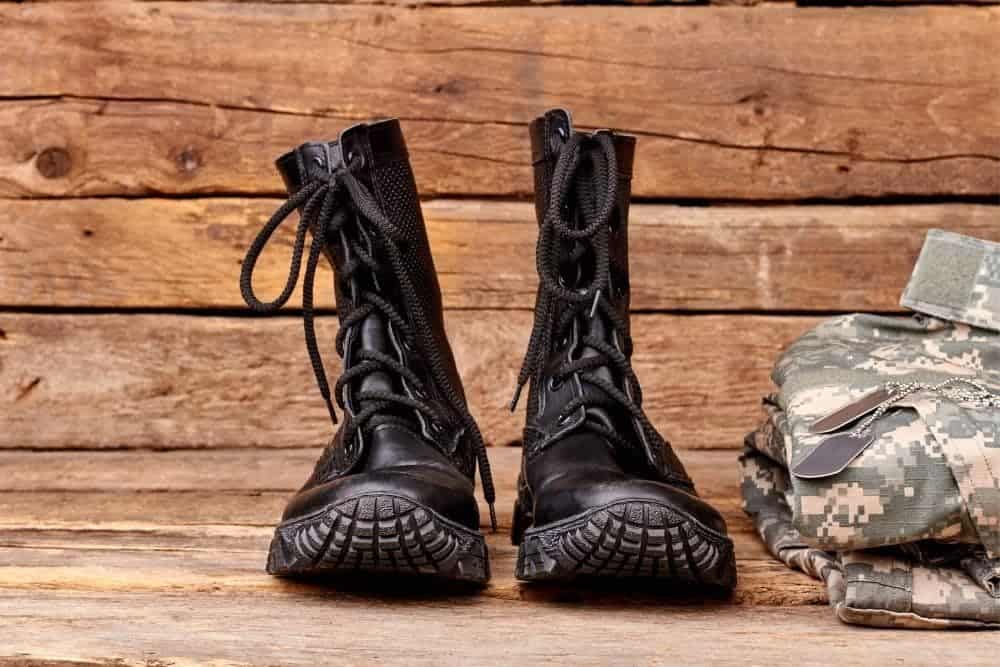
Among these materials, the mesh is considered the lightest and has the best breathability.
Mesh upper is also allowed in military boots and police footwear uniforms. Therefore, you will get better lightweight boots with mesh upper.
The nylon upper is also relatively light but not as breathable as mesh. However, they are much more water-resistant than mesh or textile uppers.
Textile upper will weigh a little bit more than mesh and nylon.
It is rarely sewn for upper parts of tactical boots that are used in the military and professional law enforcement.
This material seems not to be flexible for tactical operations but weighing the footwear down.
Toe caps
Toe caps of tactical boots are highly appreciated as they give a hard covering to protect the toes of the wearers against falling objects or compression.
There are quite a few types of toe caps on the market, typically steel caps (traditional type and heaviest), composite caps (advanced type, not too light but acceptable), TPU (relatively light), and hard plastic caps (lightest but fragile).
Among them, the steel caps are the heaviest. Each boot can weigh 0.4-0.6 lbs more when a steel cap is attached.
However, the protection of this material to the toe has been recognized. Steel caps are also relatively inexpensive.
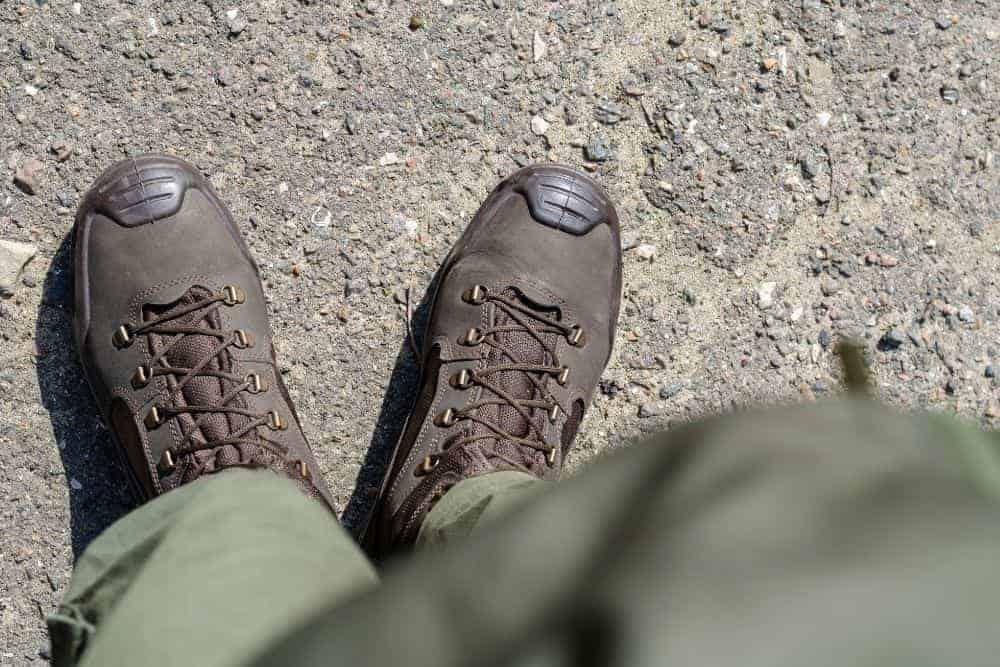
In some cases, you should not use the steel toe cap in working environments where heat and electricity are involved.
Because iron can transfer heat and electricity to the leg, causing an accident.
If you work on a construction site, quarries, or cutting factories, steel caps can be a good choice to protect your feet from cuts, chopping, and sharp falling objects.
Composite caps will increase the weight much lighter than steel caps. They qualify for ASTM standards for footwear that are used while on the job.
But composite has the highest cost and has lower strength than steel caps.
They are more toe-friendly as they do not add too much weight to the foot when walking.
Composite does not conduct electricity and heat, so it is a safe material to protect your toes when working around hot surfaces or involving heat and electricity.
TPU/hard plastic caps are the lightest, but they are prone to cuts, slits or cannot withstand hard falling objects.
So you can use these materials in normal to medium-abuse activities such as hunting, fishing, animal wandering, or normal manual workers at factories.
Shank
Just like toe caps, tactical boot shanks can be made of steel, composite, TPU, or hard plastic.
Steel shanks are usually quite heavy and hard. They are quite supportive for those with a flat arch or normal arch as well as help straighten the structure of tactical boots.
However, steel shanks are often not very resilient.
Therefore, when performing tactical operations such as climbing, it will be difficult to bend the foot to perform the movement.
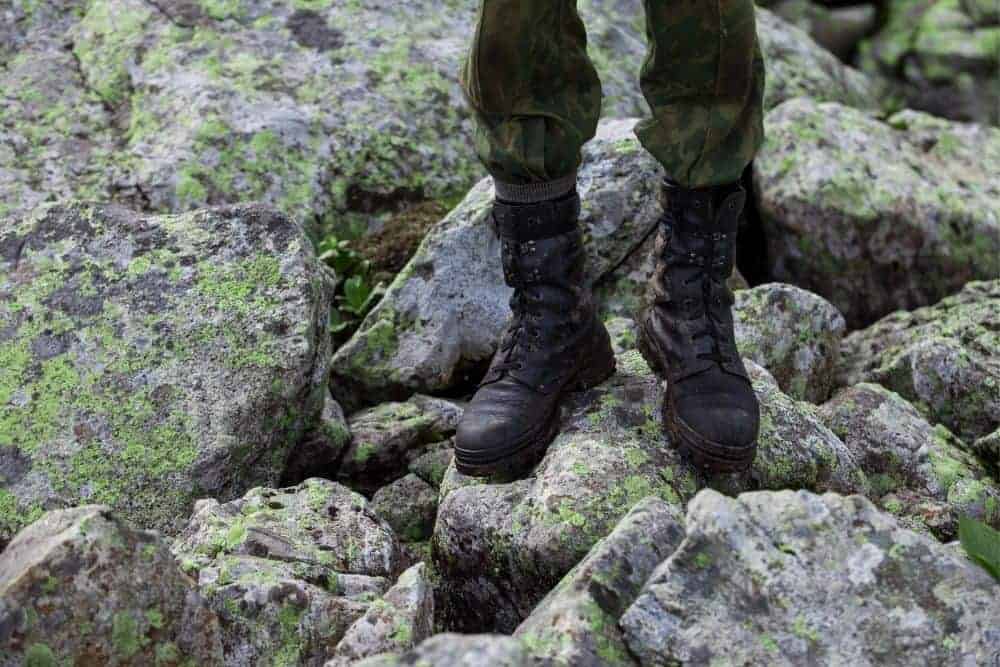
Steel shanks are more suitable for commuting activities such as running, walking, or hiking on the road.
Composite shanks are much lighter. They also have a certain stiffness but are still resilient, but not too much.
This type of material does not cause too much discomfort for the soles of the feet.
TPU/hard plastic shanks are the lightest and also relatively flexible, with high elasticity.
They are not too supportive for flat feet but can provide flexibility for the feet when performing difficult movements that require bending the foot down.
Outsole
Outsoles of tactical boots are usually made of rubber (with high adhesion) or synthetic materials (lightweight).
Among these, rubber is appreciated for both durability and adhesion.
Although the weight of rubber will usually be heavier than that of synthetic materials, some synthetic rubber lines are also quite light.
The outsole is an important part of tactical boots. If the outsole has high traction when walking on the ground surface, it reduces the risk of slipping and causing injury or death in the workplace.
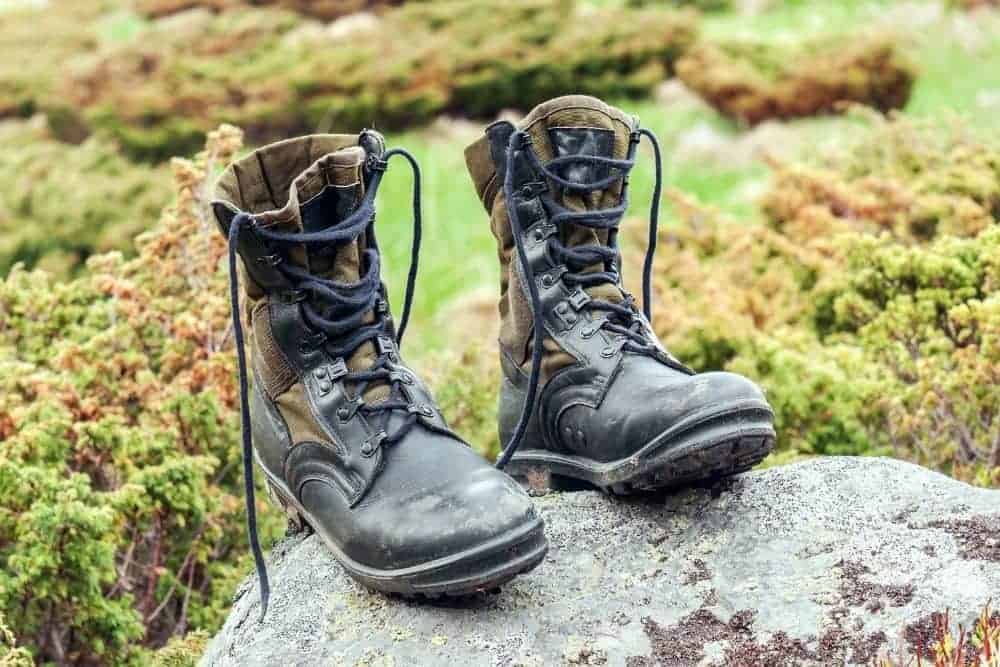
This is extremely important for those who often work around water, grease, or mud areas such as fishers, hunters, car washers, or machine repairman.
Therefore, you should not choose to reduce the boot weight by choosing an outsole material that is too light. This will not guarantee effective adhesion when needed.
Minimal and metal-free construction
Minimal and metal-free construction means tactical boots are constructed without metal elements such as steel toe caps, steel shanks, or metal eyelets.
This helps to reduce some of the weight that contributes to making the footwear lighter.
In addition, the design of the boots is also “just enough” and there are no redundant details.
Thanks to that, it is possible to minimize the weight of the boots without sacrificing functions.

Denier nylon fabric
Nylon fabric is a important factor that affects the weight of tactical boots (one of the most popular materials for making tactical boots).
Denier refers to how thick the fabric is. Normally, the thicker the fabric, the heavier the boots.
This material is highly rated for its durability, waterproofness and especially lightweight (what we are focusing on today).
It is more durable than mesh, leather and textiles but is still light due to its nylon construction.
The material helps reduce the overall weight significantly when the upper part is made from it.
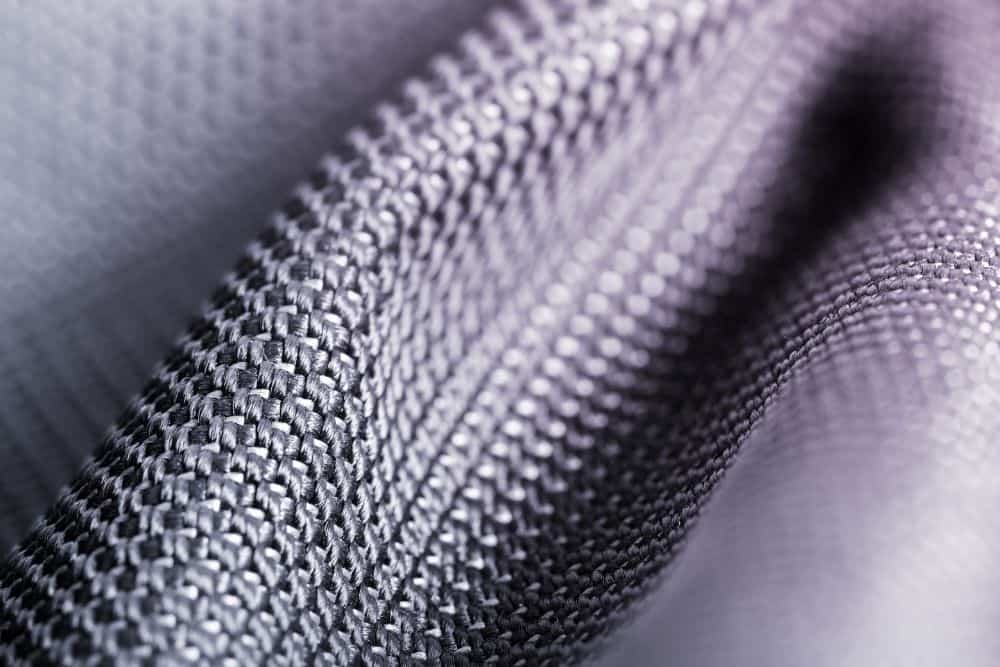
Besides, the high denier nylon fabric on tactical boots is doubtlessly thick.
The 1000D type is able to prevent water from penetrating through the super micro gaps without any waterproof coats on the surface. That is very interesting and good to know.
Nylon fabric is not all about one type of material. It varies depending on the thickness of the threads.
The weight of each type is decided by the thickness. The thicker, the heavier the weight.
If you need moderate waterproofness and the best lightweight option, you can go for the 300D type.
The 600D type is obviously heavier and 840D, 900D or 1000D are much heavier.
Thinsulate
If you choose a pair of tactical boots to wear in snow/winter/cold conditions, you will find a wide selection of 200 grams, 400 grams or 800 grams Thinsulate boots on the Internet.
The amount of Thinsulate adds a lot of weight to your boots, even without toe caps or shanks.
Therefore, cold weather tactical boots are not light. They are rather bulky and heavy.
If you live in a snowy area year-round, you don’t need a pair of lightweight boots. Because lightweight means less warmth and improperly keeping your feet healthy.
If the weather where you live changes according to the seasons with moderate winters, then you can choose a pair of boots with a padded collar instead of Thinsulate.
Doubling thick socks can be helpful to wear lightweight tactical boots in winter as well.
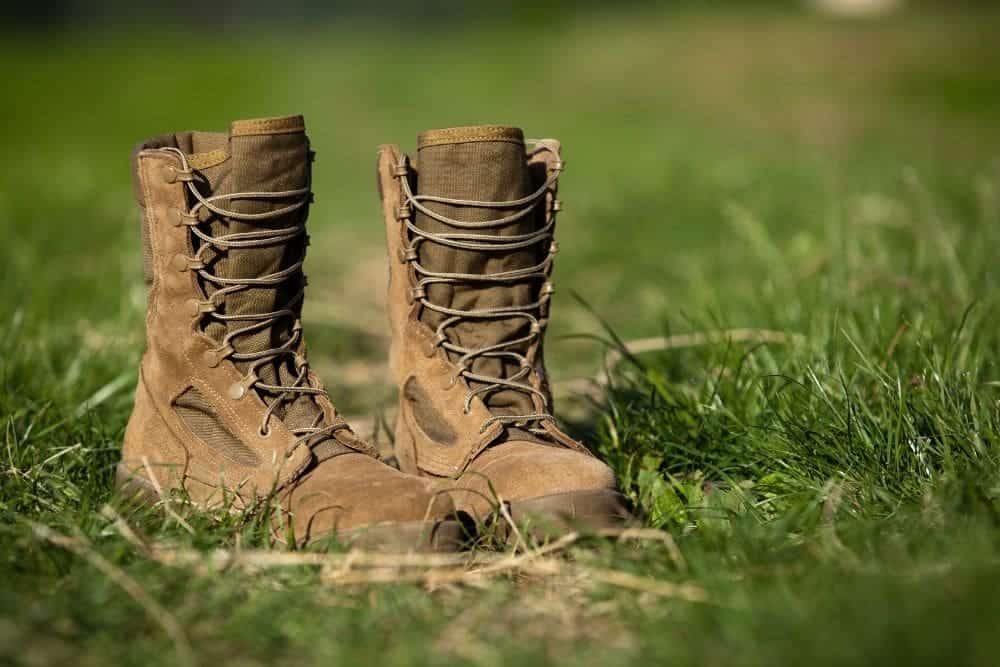
Pros and Cons of lightweight tactical boots
Everyone loves proper lightweight boots rather than just “being light”. Lightweight footwear is often synonymous with flexibility and comfort.
But it probably won’t match durability and comfort. I said “probably”, you know.
But in general, a pair of tactical boots is quite ideal for being on the feet all day long up to 14 hours while still giving full needed functions.
Here are some pros and cons of lightweight tactical boots.
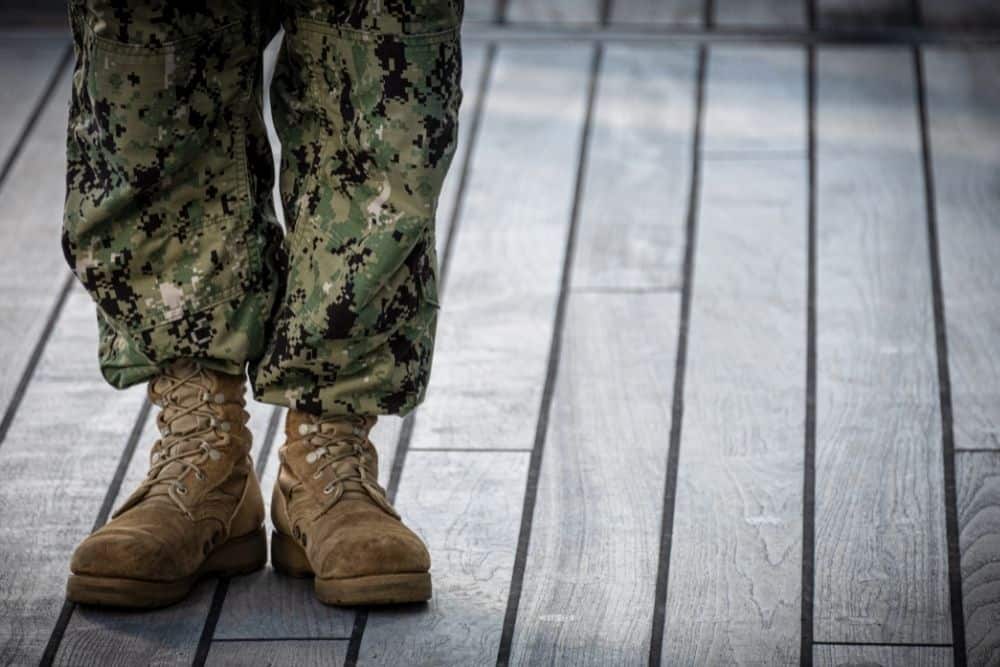
6 Pros
Energy return
If your boots make every step lighter and more energetic, especially when you have to climb stairs or carry heavy loads, that is a good energy return shoe.
One of the important factors that make this possible is the lightweight of the boots.
Lightweight boots do not weigh your steps down, which means you will walk effortlessly and actively.
Besides, tactical boots are provided with proper memory foam inside.
They provide better shock absorption to protect the foot while also providing good support for the arch and heel.
This greatly contributes to the energy returnability of the boots.
For that reason, lightweight tactical boots are the best choice for factory workers who have to stand constantly, logistics workers, shippers, or construction workers in dry conditions.
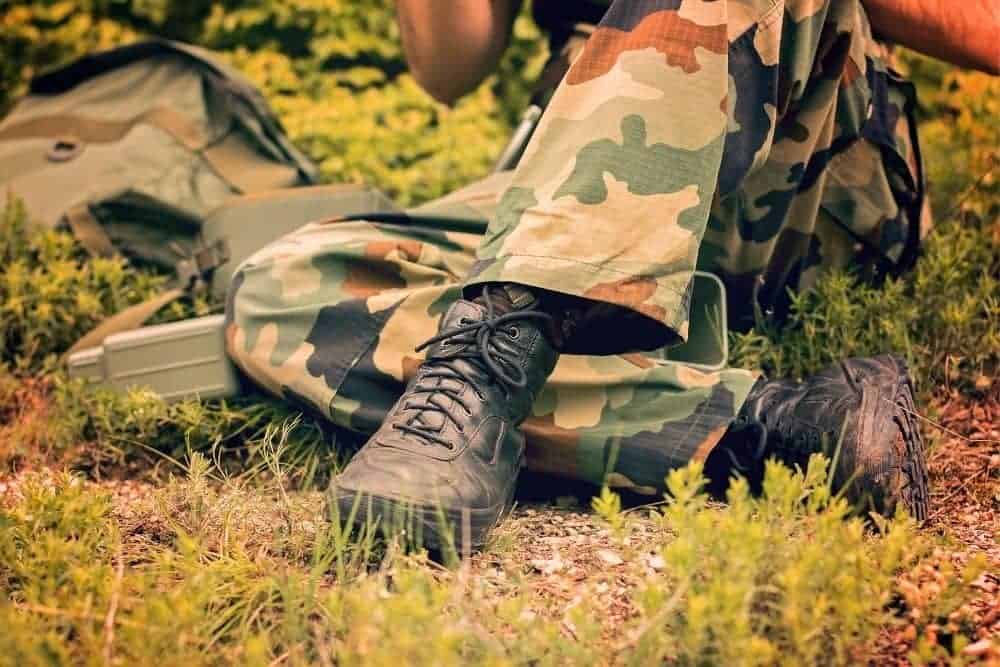
Fatigue reduction
Foot fatigue is caused by the muscle tensions that happen at the ankles, feet, and legs during walking.
Lightweight tactical boots don’t drag your feet down because of their weight.
Therefore, the wearer’s feet also don’t have to use much muscle tension to lift the footwear.
This greatly reduces foot pains, especially when moving in muddy puddles, desert sand, or dense vegetation.
Breathability
In addition, lightweight boots also often deliver better breathability in hot conditions. Therefore, they help to keep feet cool and dry.
When the foot feels comfortable inside the boot, it reduces the chances that your feet overheat and cause faster muscle fatigue while walking.
Besides, if your tactical boots use nylon fabric with a high denier (700D to 1000D), the material brings good ventilation as well as durability and waterproofness all the way to your experience.
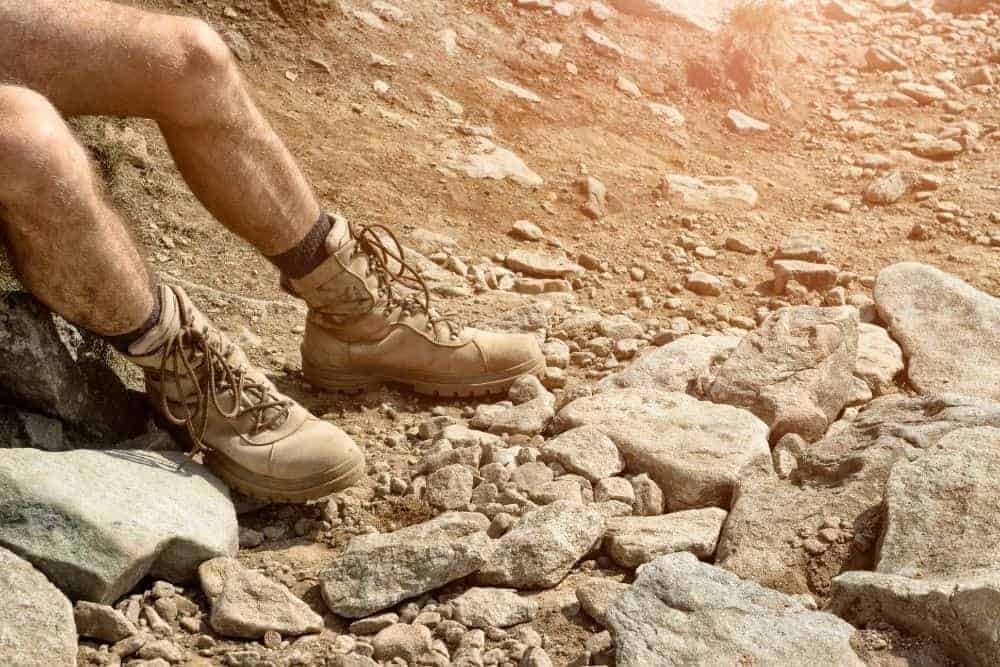
Comfort
It is obvious that lightweight tactical boots often come from minimalist construction.
Minimalist boot construction is designed to make the wearers feel like they are walking and running on a “real barefoot”.
Yes, I mean what I said. You will feel a special lightness on your foot to feel the ground.
They provide less cushion foam/pad on the insole but actually give better arch and heel support. This is very helpful for climbing the mountain on tactical boots.
But if you are expecting to walk longer with less cushion, I don’t think it’s a good idea for your foot health. You probably get some corns or blisters so far.
Flexibility
Of course, lightweight means better flexibility for your movements.
Bulky and heavy winter tactical boots often promote the restraint of maneuverability. If you only do basic daily walks and runs, a bulky boot is still acceptable.
But if you need to climb or do tactical operations while hunting or wandering animals, being able to maneuver and move quickly on your lightweight tactical boots will be extremely useful.
Badass look
Different from the rough, rigid shape of work boots but not as liberal and youthful as sports shoes, tactical boots have an optimal design that captures all the advantages and disadvantages of both.
They look cool and are just as stylish as the Marvel warrior’s footwear.
You can mix tactical boots with a variety of clothing items from uniforms to everyday outfits.
Some also feature a black polishable toe, which is ideal for wearing at work without looking too tough.

3 Cons
Durability
Sometimes you will have to compromise between light, comfortable boots and durable footwear.
Lightweight tactical boots often have minimalist construction that if you wear them often in a heavy abuse environment, the boots will quickly wear and tear for sure.
If you choose tactical boots that are kind of adequate to use in extreme conditions, you should choose more features such as composite toes, composite shanks, padded collar, or waterproof membrane. These will promote the boots to become more durable with regular use.
Nylon fabric upper is widely used for high-quality tactical boots. The high denier nylon makes the boots super durable and can withstand heavy abuse.
It also resists wear and tear on frequent uses on heavy-abused conditions as well as brings up a whole new level of waterproofness without any messy coat on the surface.
As a result, proper waterproofness contributes greatly to how long the boots can live their life.
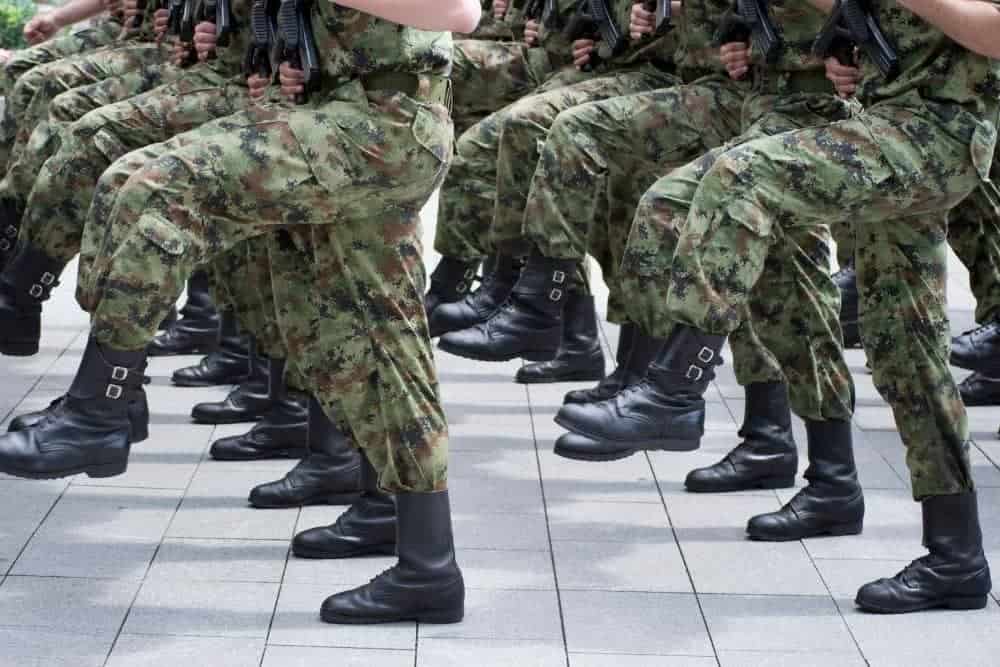
Waterproofness
If you choose to reduce the weight of your boots by choosing lower denier nylon, you will probably experience your feet easily getting wet in the event of a sudden downpour or just stepping on small puddles or walking through wet grass.
In fact, the nylon fabric upper part will weigh a few more ounces, but the material is essential to protect the foot and prolong the life of the internal components.
Less functional support and protection
As mentioned above, minimalist construction gives a better lightweight experience.
However, less cushion will often provide little support when running or standing in the footwear for more than 10 hours a day.
Besides, lightweight boots also mean less frame-resistant and less impact-resistant to provide the best protection over the feet in harsh and murderous conditions.
This is not an optimal option for the police, who often have to patrol up to 14 hours a day. They tend to have swollen feet or blisters at the end of the day.
3 handpicked lightweight tactical boots
Now, let’s get to know something good. We’ve gathered around these 3 best lightweight tactical boots that have received tons of positive reviews.
Hope you find what works best for you here.
Bates Men’s Ulta-lites 8 Inches Tactical Sport Comp Toe Boot
Looking for the best lightweight and safety work boots, Bates men’s 8″ Ultralite tactical boots are the best for you.
We believe a lightweight boot should be a boot that ensures all the features you want and still feels light to wear, not a boot that is the lightest in weight.
These Bates boys are all you need to have the best pair of work boots.
They possess a sturdy construction with composite toe caps that have satisfied the ASTM standard for typical work boots.

Whether you are working as police officers for long patrol shifts day and night or as metal workers, your feet are guaranteed to be safe from compression and sharp falling objects to a certain extent.
Many said the boots are so lightweight that it makes them feel like walking on running shoes.
After all, you get very happy feet at the end of the day being on the boots for more than 10 hours.
This is due to the cushioned insole and padded collar that help hold up the legs pretty well and comfortably.
The boots keep your feet warm and comfy in cold weather while giving proper breathability and dry feet in hot and humid conditions.
However, the durability of the boots is still under controversy.
Features
- Quality synthetic leather and nylon upper
- High traction rubber outsole on all terrains
- ASTM-satisfied composite toe caps for better protection
- Moisture-wicking and breathable lining
- Lightweight EVA midsole
Con
- Moderate durability
Reebok Work Duty Men’s Rapid Response RB RB8694 6″ Tactical Boot
Another short collar with lightweight safety composite toe, these Reebok Work Duty Men’s Rapid Response Rb RB8694 tactical boots are excellent for heavy-abuse working environments.
People love how the boots fit around their ankles pretty well and comfortably with a padded collar and adjustable circumference.
Yes, they do have composite toe caps. But all of these features won’t weigh the boots down due to their sturdy construction.
The boots do make the wearers feel like they are walking and running on tennis shoes.

However, the boots seem to be a little bit bulky and thick at the top of the tongue parts. This may slow down your flexibility and comfort.
Besides, it is 100% metal-free, which means there is no problem related to the metal detector at the entrance of the airport or factories.
In cold weather, your feet are kept warm properly while in hot weather, the boots do breathe very well.
The shock eliminator heel cushion is an exceptional feature that promotes great support for the heel and ankle when you have to stand or walk all day long.
A little break-in is required for some people but overall, the boots are comfortably wearable right out of the box for up to 12 hours without much blisters and pains.
Some said the boots fit a little tight at the toe caps, therefore we recommend trying a half size bigger.
Features
- Quality and lightweight suede or textiles
- Extra grippy rubber outsole on all terrains
- Composite toe caps are provided
- 6 inches height
- Padded collar and adjustable circumference for extra comfort
Con
- The size may run a bit smaller
Bates Men’s 5″ Ultralite Tactical Sport Military Boot
Low cut and lightweight, these Bates Men 5″ Ultralite tactical boots maximize your flexibility when walking all day long at work.
The boots do provide great functions (except safety toe) and are still lightweight due to their synthetic leather and low-profile rubber outsole.
The boots give excellent comfort even when walking on them for 30 hours straight. They are truly built to last in heavy-abuse conditions.
Your feet feel good, comfy, and dry when stepping on shallow puddles and water spray.

It seems there is no waterproof lining attached inside but they do have a breathable and moisture-wick lining to keep the feet dry and cool.
Therefore, pay attention to soak them in deep water.
Overall, many reviewed the boots have very well-stitched construction. The tread and seam are rugged and sturdy until they completely end their life.
No matter what jobs you are doing, the boots provide great support at the arch to stand all day long without foot fatigue.
Without toe caps, the roomy toe boxes are exceptionally comfortable for the feet up to 12 hours of being on the boots.
However, they may require a little time to break in, then you will love wearing these boys every time you walk to the office.
Features
- Quality and lightweight leather and nylon upper
- Super non-slip and high traction rubber outsole
- Cushioned insert for comfort
- Lightweight cushioned midsole
- The side zipper is available
Con
- No safety toes are provided
Wrapping it Up
Sometimes a lightweight boot doesn’t really just mean a boot that’s light in its weight.
For us, the definition of lightweight footwear is to provide all the necessary features yet being light enough to feel comfortable and energetic when worn at work.
Therefore, I advise you not to ignore some important features of tactical boots such as shanks, toe caps, or rubber outsoles just to make the footwear lighter.
This will cost your feet at some point.

